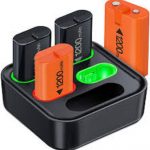Have you ever been behind the wheel of your car, only to notice that something just doesn’t feel quite right? Perhaps the engine is running rough, or the car is driving unevenly. These symptoms can be frustrating, but they can also be indicative of different issues that require different solutions.
In this post, we will explore the differences between rough idling and rough driving, and provide insight into what might be causing these issues and how to address them.
Whether you’re a seasoned driver or just getting started, understanding these distinctions can help you keep your car running smoothly and safely on the road.
What is Rough Idling?
Rough idling refers to the situation where your car’s engine is running, but it is not running smoothly. You may feel vibrations or hear strange noises coming from the engine.
Common Symptoms of Rough Idling
Engine vibration – The engine may vibrate excessively, making the car shake.
Engine hesitation – The engine may hesitate or stumble when you try to accelerate.
Engine stalling – The engine may shut off when idling or after starting.
Misfiring – You may hear popping or sputtering noises from the engine.
Poor fuel economy – Rough idling can also result in poor fuel economy.
What Causes Rough Idling?
Several factors can cause rough idling, including:
Dirty or clogged air filters – Air filters that are dirty or clogged can prevent air from entering the engine, causing rough idling.
Malfunctioning spark plugs – Worn or dirty spark plugs can cause misfiring and rough idling.
Dirty fuel injectors – Dirty fuel injectors can cause fuel to be delivered unevenly to the engine, leading to rough idling.
Bad sensors – Faulty sensors can provide incorrect information to the engine control unit, causing rough idling.
Vacuum leaks – Leaks in the vacuum system can cause air to enter the engine, leading to rough idling.
How to Fix Rough Idling?
Fixing rough idling involves identifying and fixing the underlying problem.
Some common solutions include:
Replacing air filters – Replacing dirty or clogged air filters can improve airflow to the engine, eliminating rough idling.
Replacing spark plugs – Replacing worn or dirty spark plugs can improve ignition, eliminating misfiring and rough idling.
Cleaning fuel injectors – Cleaning dirty fuel injectors can ensure even fuel delivery, eliminating rough idling.
Replacing sensors – Replacing faulty sensors can provide accurate information to the engine control unit, eliminating rough idling.
Fixing vacuum leaks – Fixing leaks in the vacuum system can prevent air from entering the engine, eliminating rough idling.
Note: If you’re a car owner, you know how important it is to keep your vehicle running smoothly. What if your car idles rough but drives smooth? It may seem like a contradictory statement, but it’s a real issue that can occur. To learn more about what causes this problem and how to fix it, check out this informative article on car idling rough but driving smooth. You’ll find valuable insights into diagnosing and resolving this issue, so you can get back to enjoying a smooth and comfortable ride.
What is Rough Driving?
Rough driving, on the other hand, refers to a situation where your car is not driving smoothly. It is characterized by a bumpy or unstable ride, and it can be caused by several factors.
Common Symptoms of Rough Driving
Vibrations – You may feel vibrations or shaking in the car.
Uneven acceleration – The car may accelerate unevenly or jerk.
Drifting or swaying – The car may drift or sway when driving straight.
Poor handling – The car may handle poorly or feel unstable.
Abnormal tire wear – Rough driving can also cause abnormal wear on tires.
What Causes Rough Driving?
Rough driving can be caused by several factors, including:
Suspension problems – Worn or damaged suspension components can cause rough driving.
Alignment issues – Improper alignment can cause uneven tire wear and rough driving.
Tire problems – Worn or damaged tires can cause rough driving.
Brake problems – Worn or damaged brake components can cause vibrations and rough driving.
Steering problems – Worn or damaged steering components can cause rough driving.
How to Fix Rough Driving?
Fixing rough driving involves identifying and fixing the underlying problem. Some common solutions include:
Replacing suspension components – Replacing worn or damaged suspension components can improve ride quality and eliminate rough driving.
Aligning the wheels – Proper wheel alignment can improve handling and eliminate uneven tire wear and rough driving.
Replacing tires – Replacing worn or damaged tires can improve ride quality and eliminate rough driving.
Replacing brake components – Replacing worn or damaged brake components can eliminate vibrations and rough driving.
Fixing steering components – Replacing worn or damaged steering components can improve handling and eliminate rough driving.
The Bottom Line
Rough idling and rough driving are two distinct conditions that can cause your car to behave abnormally. Rough idling is characterized by a rough engine that vibrates, hesitates, misfires, stalls, or has poor fuel economy. Rough driving, on the other hand, is characterized by a bumpy or unstable ride, uneven acceleration, drifting or swaying, poor handling, and abnormal tire wear.
Identifying the underlying problem and fixing it is the key to eliminating both rough idling and rough driving. Regular maintenance and timely repairs can help prevent these issues from occurring and ensure that your car runs smoothly and safely.







